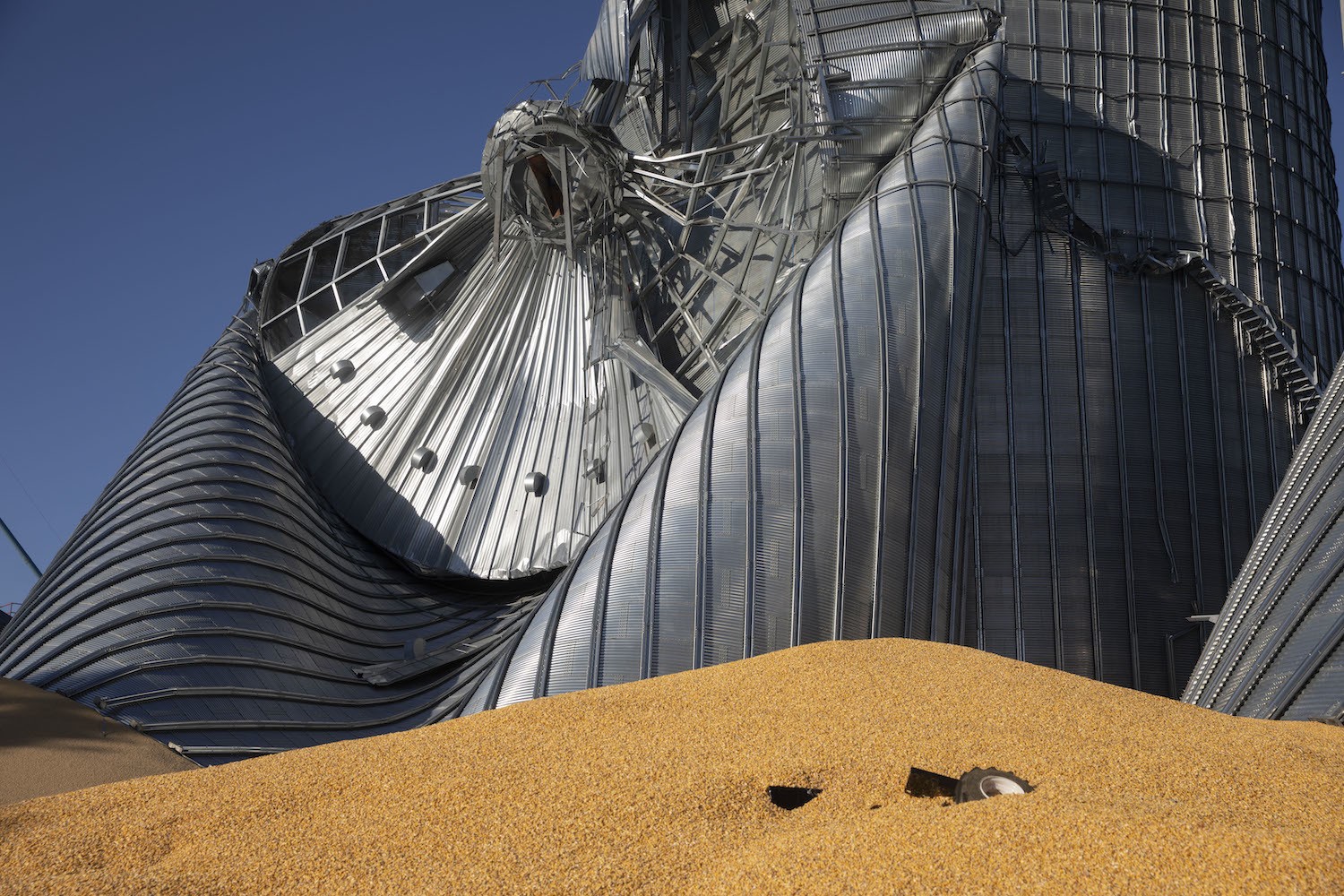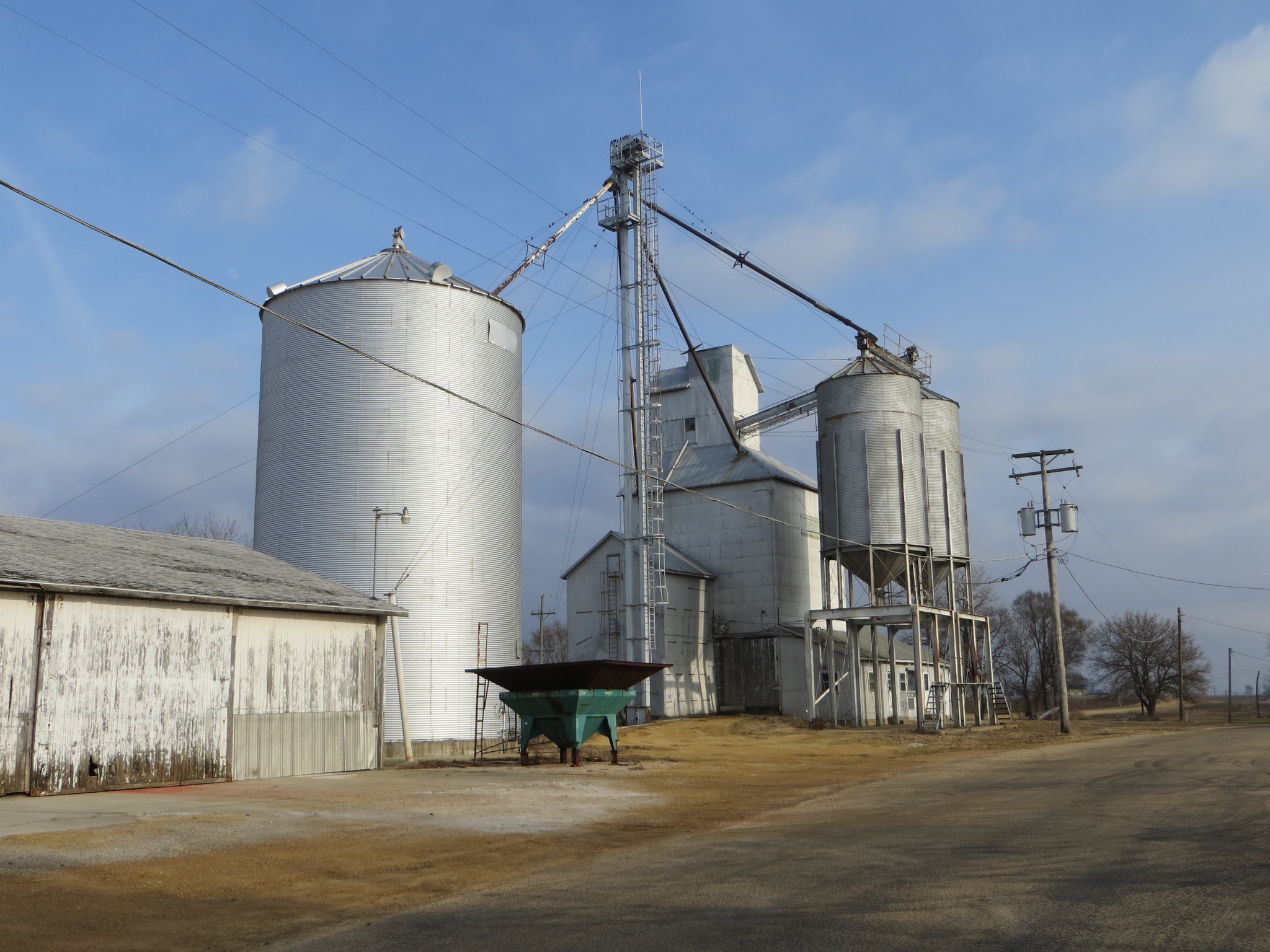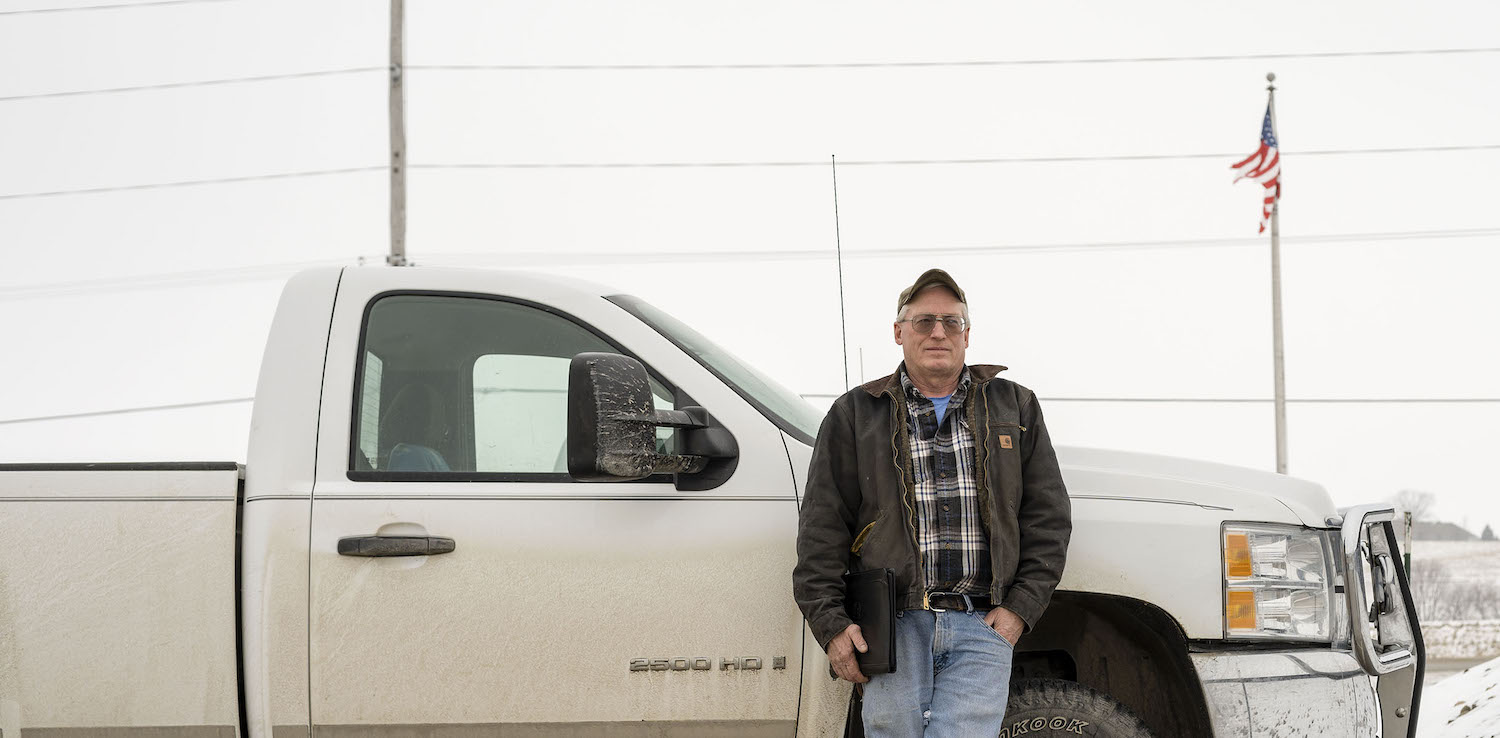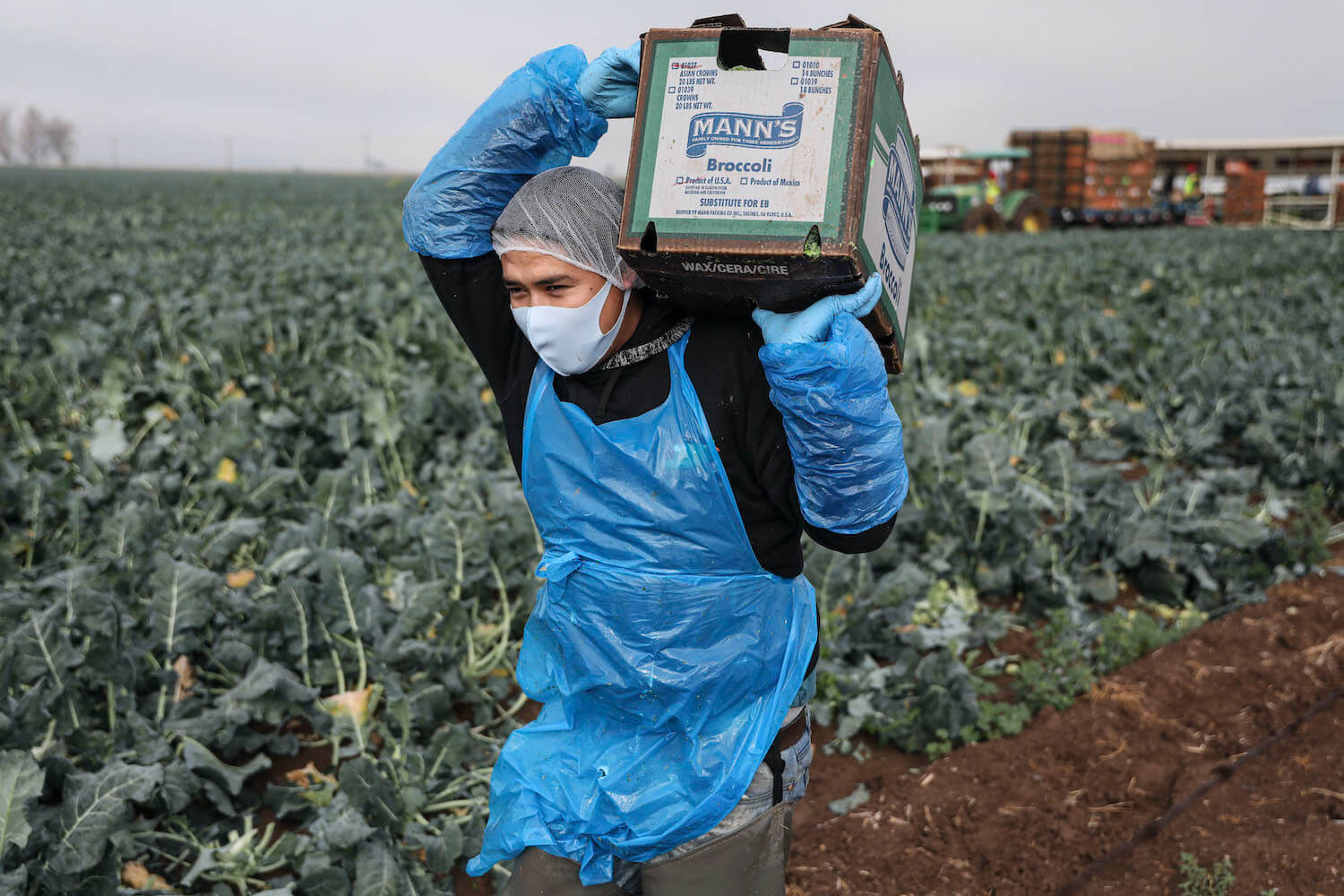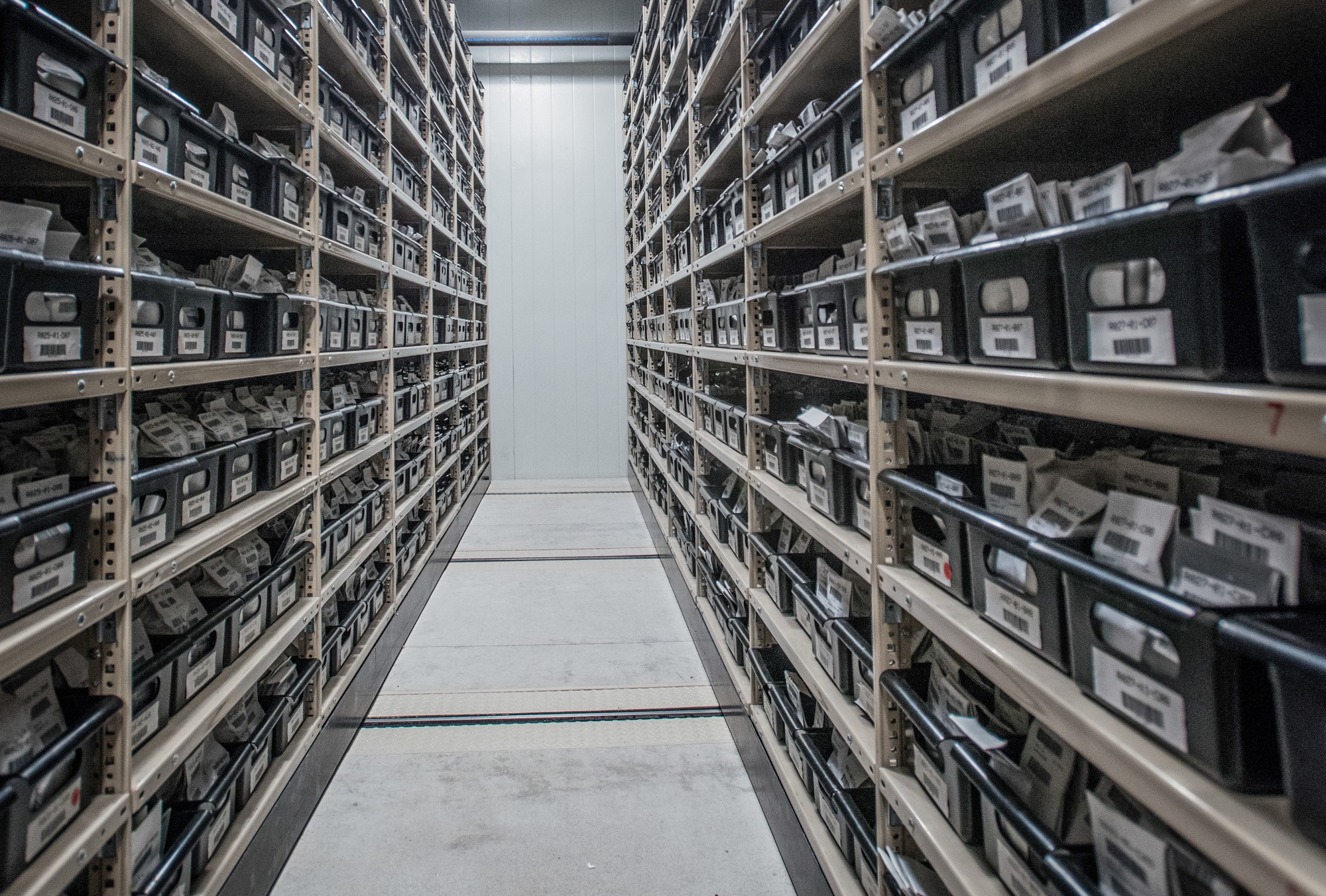Iowa farmer Matthew Stalzer knew some bad weather was headed his way on August 10 of 2020, but he wasn’t too concerned. It looked like a typical summer thunderstorm on the radar—heavy rain, perhaps, but nothing to really worry about. Then, he heard from a family member who worked about 45 minutes away. It was bad, she said, and she suggested taking cover. He went into a shed to wait it out, only to realize as he watched his pickup truck shuddering in the winds that he was dealing with something else.
Pictured above: Corn sits near damaged grain bins at the Heartland Co-Op grain elevator on August 11, 2020 in Luther, Iowa.
“I was like, ‘Oh yeah, this is a derecho,’” he told me by phone in July. “Straight line winds and it’s a pain.”
The derecho that tore a 770-mile path across the Midwest from the South Dakota-Nebraska border to Ohio one year ago was far more than a pain. It was an unprecedented economic disaster; the most costly thunderstorm calamity in U.S. history. It spawned tornadoes, snapped power lines, and blew semi-trucks off the road. Four people died. Still, it failed to capture much national attention, a sore spot for residents who saw their lives and livelihoods threatened that August afternoon.
Derechos are like hurricanes—if hurricanes hit the Corn Belt. Rather than rapidly spinning winds, though, a derecho’s thunderstorm complex is organized in a straight and forbidding line, producing clouds that can look almost like a sky-high shelf and span hundreds of miles. They can be as destructive as their coastal counterpoint, and in some areas of the Midwest, happen just as frequently. Crucially, derechos can often be harder to predict because their intensity shows up on radars just minutes or hours before they hit. The one that swept through Stalzer’s farm in central Iowa last year was particularly powerful, with winds believed to have reached up to 140 miles-an-hour.
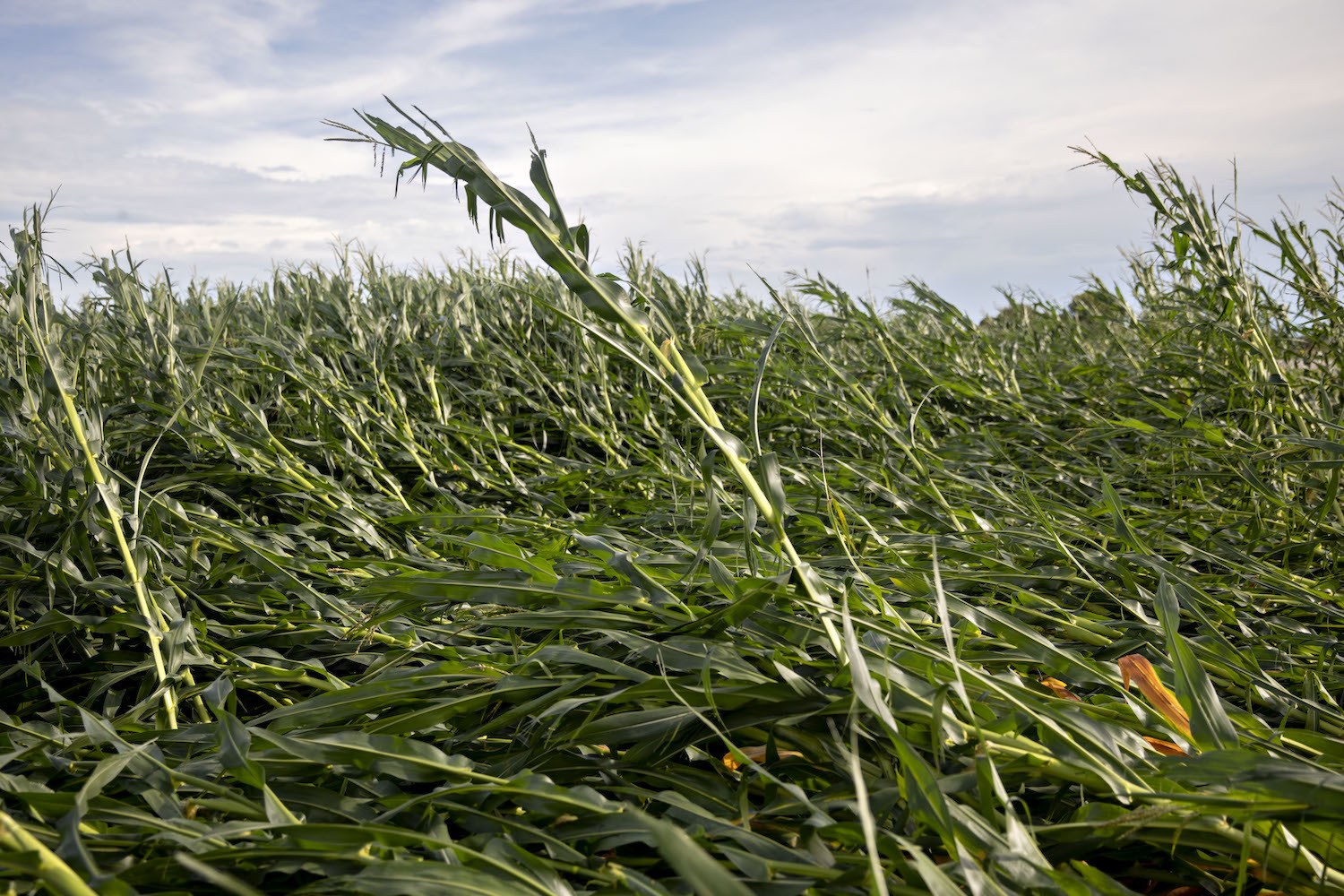
Since the 2020 derecho happened a month later in the season, it met maturing crops just weeks away from being harvested.
Daniel Acker/Getty Images
Stalzer had experienced this type of storm almost a decade before, in 2011, and it left him with $750,000 in damages. Still, he found himself taken aback by what he saw when he surveyed the aftermath of this derecho on his nearly 6,000 acres of corn and soybeans.
“The corn was as flat as concrete,” Stalzer said.
The 2011 derecho happened in July, giving Stalzer enough time to do damage control on his budding crops. Since the 2020 derecho happened a month later in the season, it met maturing crops just weeks away from being harvested. Stalzer says his insurance company told him to just destroy the acres the storm had swept across—at that point in the season, it was simply too far gone; the quality of what was left wouldn’t be sufficient and risked growing mold.
According to the American Farm Bureau Federation, Stalzer was far from alone: the derecho caused an estimated $490.8 million in crop damage. Of the crops that did survive, Iowa farmers reported that less than half of their corn and soybeans were in “good to excellent condition” at the end of the harvest season, a double-digit percentage drop from years before. Meaghan Anderson, the Central Iowa Extension field agronomist for Iowa State University, called the derecho the “motherload” of all disasters she’s helped farmers face.
DNR estimates show upwards of 4.4 million trees were felled in Iowa alone. It’s a loss that left the state more vulnerable to the effects of climate change—like this summer’s heat waves.
“It was pretty obvious within a matter of hours that this was going to have a dramatic effect on the crop we produce in this part of the state,” she said, adding that derecho damage to structures like grain bins, equipment, and sheds compounded the challenge and costs.
Now, as farmers in the nation’s leading corn producing state survey their fields once again, the derecho’s impacts continue to shape their yields. It’s a shift some experts warn will likely be felt for years to come, as farmers and residents alike contend with a storm-altered ecosystem.
Nick McGrath, the Iowa Department of Natural Resources’ (DNR) community disaster recovery coordinator, sums up the 2020 derecho in two words: “extraordinarily devastating.” He’s part of a team trying to determine the lasting toll of the storm. Working with officials from federal agencies like the U.S. Forest Service, McGrath will conduct on-the-ground surveys to determine how many trees were downed, among other casualties.
While their findings have not yet been published, McGrath told The Counter that DNR estimates show upwards of 4.4 million trees were felled in Iowa alone. It’s a loss that left the state more vulnerable to the effects of climate change—like this summer’s heat waves, for instance, which have been felt more intensely in Iowa because there’s less shade overall. McGrath pointed to his own home, which is still awaiting derecho repairs, as evidence.
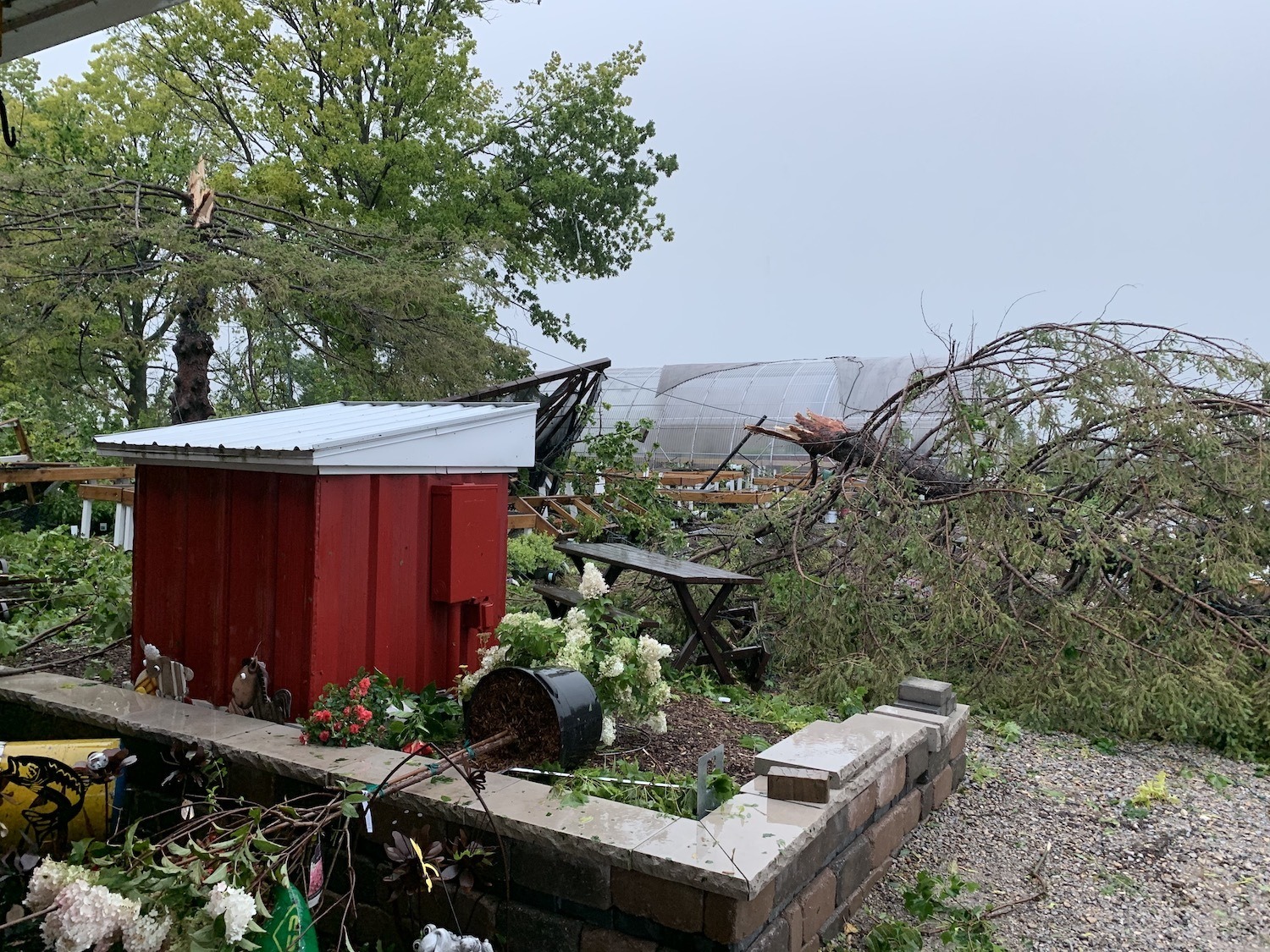
Nick McGrath, the Iowa Department of Natural Resources’ (DNR) community disaster recovery coordinator, told The Counter that DNR estimates show upwards of 4.4 million trees were felled in Iowa alone.
Nick McGrath
“Without the trees to cool your home, I now have to run my window [air conditioning] units more. Those window units then in turn crank out more heat that heats my home, so I then have to then run it some more,” McGrath said. “The energy use and the additional expense that I’m going to have to field to run those just to keep my house cool is going to be felt across all communities.”
For farmers in particular, McGrath says the loss of trees, combined with storm-disturbed soil, is making fields more inviting to invasive species. Those same conditions have also made fields ripe for what’s known as “volunteer corn,” a phenomena that occurs when residue left by the previous year’s yield sprouts up again. Gared Shaffer, South Dakota State University (SDSU) Extension weeds field specialist, likens volunteer corn to a weed. Left untreated, one study found it can prompt a yield loss of up to 13 percent where corn is planted and up to 54 percent where soybeans are planted.
Knowing that the conditions the derecho created were ideal for “astronomical levels” of volunteer corn, as Anderson put it, she encouraged farmers to take early action by using additional herbicides. That presented difficulties for those hoping to plant the same strain of corn the following year: it would be killed off along with the volunteer corn if treated. So, Anderson said, many farmers were “backed into a corner” and planted soybeans instead. Findings from a March prospective plantings report issued by the United States Department of Agriculture (USDA) supported her observations, showing that Iowa farmers planned to plant 400,000 fewer acres of corn and 400,000 more acres of soybeans this year, compared to 2020.
“My grampy, he always said, ‘You don’t have to put insurance on the grain bins, they’re not going to start on fire.’ He never thought there’d be a windstorm that could take them out.”
Stalzer was among those who readjusted his planting plans. As his insurance recommended, he disked an estimated 1,500 acres soon after the derecho to destroy the damaged crops. Then he went back out with his tractor after the 2020 harvest to kill any extra growths he saw peeking through. Before planting this spring, he gave it one last pass; all of that was in addition to the extra herbicide he had used. By July, he was cautiously optimistic that the efforts had paid off.
“We’ll be okay,” he said, calling the amount of volunteer corn on his farm “a bit above average.”
“It’s probably not going to be the high record yield, but it’s still going to be a pretty decent crop,” he continued, and then quickly added: “So far.”
Altogether, those extra efforts have added up. In total, Stalzer estimates the 2020 storm cost him about $75,000 out of pocket, with insurance covering much of the damage. It’s a fraction of the tab he accrued from that derecho a decade ago, largely due to the work he’s put in since to mitigate the effects of future storms. After losing multiple grain bins during the 2011 storm, for example, he installed wind bands around his new ones and then added them to his insurance policy.
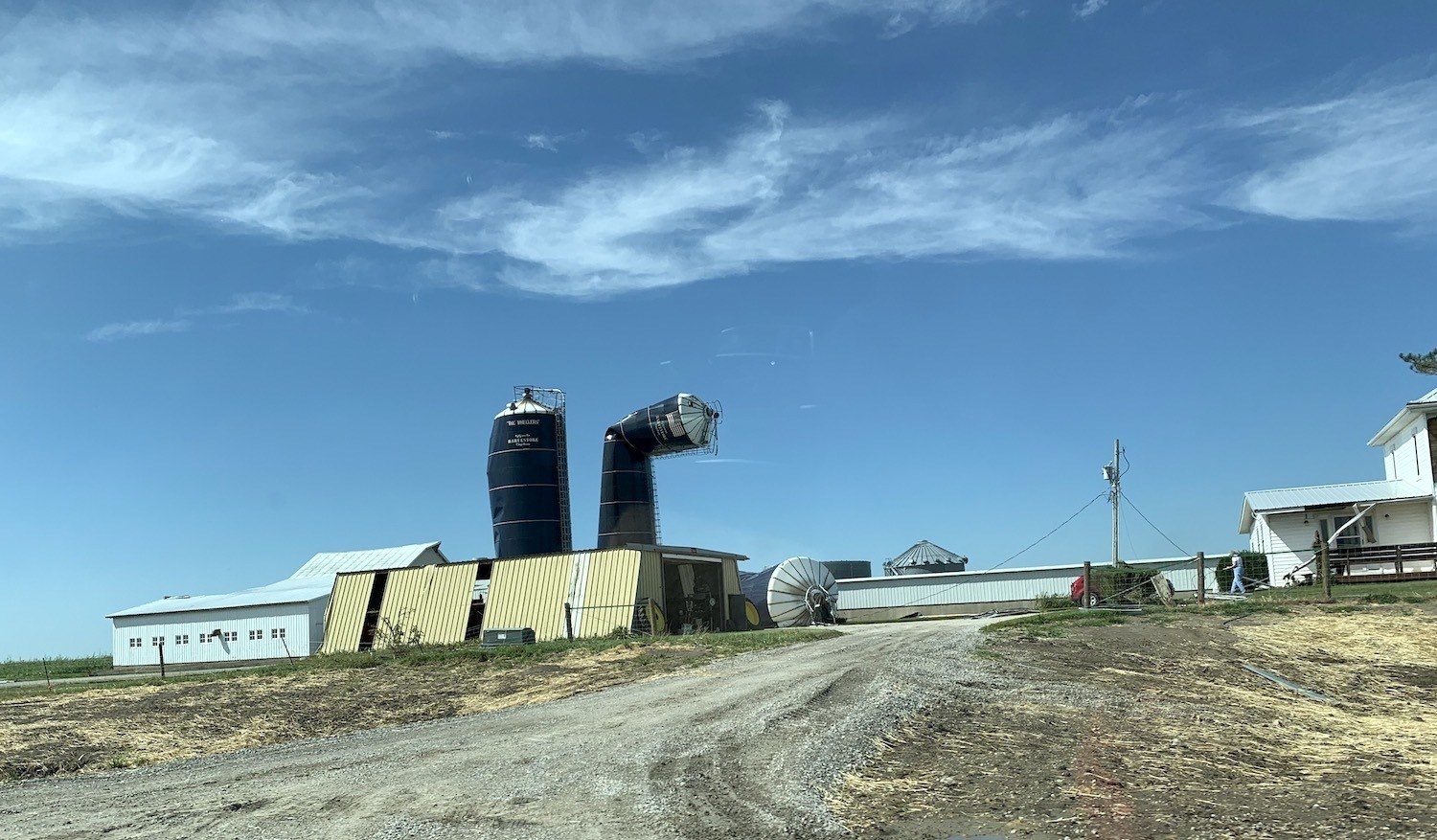
Not only did the storm have long-lasting effects on crops, but also the derecho damaged structures like grain bins, equipment, and sheds.
Nick McGrath
“My grampy, he always said, ‘You don’t have to put insurance on the grain bins, they’re not going to start on fire.’ He never thought there’d be a windstorm that could take them out,” Stalzer said.
Anderson expects that most people approached the losses the way Stalzer did, though she cautions that costs were likely prohibitive for some farmers—even with insurance—because they also shouldered the expenses of repairing their homes. And government aid has been hard to come by for many in the state. As The Washington Post reported, the vast majority of those who applied for Federal Emergency Management Agency (FEMA) funds were rejected. Currently, farmers affected by a derecho do not qualify for assistance through USDA’s disaster relief program, though the House Agriculture Committee unanimously passed a bill to change that in late July.
Local help has been available from organizations like the Coalition to Support Iowa’s Farmers (CSIF), which offered a grant to support 45 livestock farms that lost a combined 1,600 trees. Due to dry conditions this summer, however, CSIF executive director Brian Waddington said they aren’t expecting many new trees to be planted for months, if not more than a year.
“Farmers have certainly experienced some challenging times the last few years with everything from depressed commodity prices to the Covid pandemic, and now we’re rolling right into a drought. They’re definitely feeling stressed.”
“Farmers have certainly experienced some challenging times the last few years with everything from depressed commodity prices to the Covid pandemic, and now we’re rolling right into a drought,” Waddington said. “They’re definitely feeling stressed.”
Nick McGrath of the Iowa DNR said that replanting is a key focus moving forward, not only for farmers but for the state as a whole. Residents might not be able to see all the additional effects of these storms, yet but will feel them in years to come if efforts to mitigate damage now fail to progress.
The eventual DNR report will show that with all the derecho-related damage, Iowa is also losing the power of millions of trees to sequester 23,000 tons of carbon, remove 335 tons of air pollution, cut energy use by $7.7 million, and curb $6.8 million in emmissions.
McGrath said he’s working to determine which tree species survived the storm in hopes of getting more of those planted in the future—infrastructure, he calls it, that can survive the next storm.
